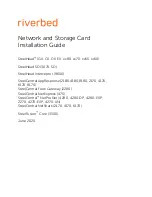
Public Version
Display Subsystem Integration
www.ti.com
7.3.1.4.2 Autoidle Mode
The RFBI, display controller, DSI protocol engine, and L4 interfaces can internally gate their clocks to
decrease power consumption if no transaction is present on the related bus. The following bits must be set
to enable this functionality:
•
DSS.
[0] AUTOIDLE bit (1: Autoidle; 0: Clock free-running) for the display subsystem
•
DSS.
[0] AUTOIDLE bit (1: Autoidle; 0: Clock free-running) for the RFBI
•
DSS.
[0] AUTOIDLE bit (1: Autoidle; 0: Clock free-running) for the display
controller
•
DSS.
[0] AUTOIDLE bit (1: Autoidle; 0: Clock free-running) for the DSI protocol
engine
•
DSS.
[9] FUNCGATED bit (1: Functional clocks gated enabled; 0: Functional clocks
gated disabled) for the display controller
NOTE:
All the bits listed above (except for the FUNCGATED bit) are set to 1 by default. It is highly
recommended to set all the bits to 1 to save power.
7.3.1.4.3 Idle Mode
The display controller, DSI protocol engine, and RFBI can be configured into one of the following
acknowledgment modes:
•
Force-idle mode: The module immediately enters the idle state on receiving a low-power mode request
from the PRCM module. In this mode, the software must ensure that there are no asserted output
interrupts before requesting this mode to go into the idle state. Set the DSS.
SIDLEMODE bit field to 0x0 (reset value) for display controller, set the DSS.
SIDLEMODE bit field to 0x0 (reset value) for DSI protocol engine, and, finally, the
DSS.
[4:3] SIDLEMODE bit field to 0x0 (reset value) for RFBI.
•
No-idle mode: The module never enters the idle state. Set the DSS.
[4:3]
SIDLEMODE bit field to 0x1 for display controller, set the DSS.
[4:3] SIDLEMODE bit
field to 0x1 for DSI protocol engine, and, finally, the DSS.
[4:3] SIDLEMODE bit field
to 0x1 for RFBI.
•
Smart-idle mode:
–
Display controller: After receiving a low-power-mode request from the PRCM module, the display
controller module enters the idle state when all the following conditions are satisfied:
•
All asserted output interrupts are acknowledged (no interrupt pending).
•
The display controller does not use anymore the L4 interface clock (DSS_L4_ICLK).
–
DSI protocol engine: After receiving a low-power-mode request from the PRCM module, the DSI
protocol engine enters the idle state when all the following conditions are satisfied:
•
All asserted output interrupts are acknowledged (no interrupt pending).
•
The DSI protocol engine does not use the L4 interface clock (DSS_L4_ICLK) anymore.
•
The SCP and PWR transactions are complete.
•
No data remains in the TX FIFO (data waiting in the FIFO to be sent to the peripheral).
To configure the display subsystem in smart-idle mode, set the DSS.
SIDLEMODE bit field to 0x2 for display controller, set the DSS.
[4:3] SIDLEMODE bit
field to 0x2 for DSI protocol engine, and, finally, the DSS.
[4:3] SIDLEMODE bit field
to 0x2 for RFBI.
Once the idle handshake protocol is over:
•
The DSS L4 interface clock (DSS_L4_ICLK) can be shutdown at any time.
•
Any transaction on the L4 configuration port is ignored.
7.3.1.4.4 Wake-Up Mode
The Display Controller (DISPC) supports the wake-up protocol. The mode is selected by programming the
appropriate value in the DSS.
[2] ENWAKEUP bit. The wake-up signal is asserted
when the DISPC is in idle mode and when anyone of the following events occur:
1624
Display Subsystem
SWPU177N – December 2009 – Revised November 2010
Copyright © 2009–2010, Texas Instruments Incorporated
















































